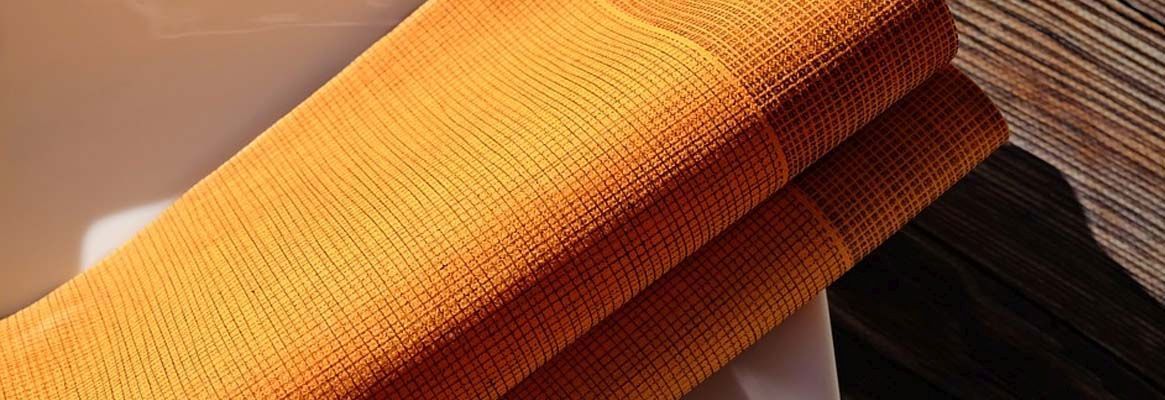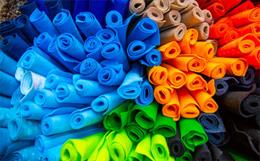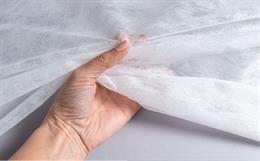Nonwoven fabrics have beenproduced since a long time by binding cut fibres through mechanical, physical,chemical, heat or solvent treatment. Several patents and articles are availableto produce nonwoven webs, fabrics and structures for them to be used in variousapplications. Nonwoven structure has unique properties compared to othertextile structures; high strength and stability in fibre direction andvice-versa in a direction perpendicular to the fibre. This property helps totailor the nonwoven products to stay stable (durable nonwovens) or breakdown onusage (disposable nonwovens).
The Fibre Reinforced Composites(FRC) is a common material used as building material. It is also widely used inautomotive industries. Nonwoven structures from fibres are produced fromvarious processes such as spunmelt, spunlacing, thermal bonding, chemicalbonding, mechanical processes, etc. Mechanical process is one of the morecommon methods used today and it is usually done in two steps: carding andneedle punching processes. The carding process opens up the bulk fibres andaligns the single fibres in one direction forming a web. The web is then fedinto needle punching machine where the fibres are compressed to requiredthickness and mechanical entangling of fibres for good strength along fibredirection.
The needle punch density hasdirect influence on the performance of nonwovens. These processes are combinedto make it a continuous process for easy and cost-efficient nonwovens. Thisprocess can be automated for uniform nonwovens. The fibres which give strengthto composites are reinforced in matrix in continuous or discontinuous/dispersedphase. The continuous phase is where the textile structures are used and thesestructures give high degree of uniformity. The woven and knitted structures aremore common in textile fabrics and these structures can be seen used incomposites. However, there are few limitations for these structures to be usedas reinforcements in composites; affordable woven/knitted structures areavailable only in low thickness/weight and the process is more expensive thannonwovens.
Nonwovensare good alternatives as the production cost is low and the thickness can bevaried easily. The interface in the composites is one of the most importantfactors for good performance. Several thin layers of woven structures incomposites create several interface layers with the matrix which also createsdifferent modes of failure. It is possible to reduce the modes of failures byreducing the number of interface layers through thicker nonwovens. Furthermore,nonwoven textiles tested along the fibre direction are proved to have higherYoungs modulus and tensile strength than woven and knitted textiles. Thissuperior property of fibres in one direction reflects in the composites whennonwovens are reinforced in composites.
Nonwovens are made from both manmade fibres and natural fibres, but the nonwovens from manmade fibres have higher market share than the natural fibres. The composites made from natural fibre nonwovens are used in automotive industry to absorb sound waves and give acoustic insulation. However, the physical properties of the natural fibre deteriorate over time due to degradation and therefore the applications are limited. The manmade fibres are durable, resistant to microbial attacks and weathering, and therefore attractive in composite applications. Lately, the regenerated cellulose fibre (viscose rayon) nonwovens experience highest growth among all fibres.
Thermoplastic polymers such as polylactic acid (PLA), polyethylene (PE), polypropylene (PP), polyvinyl chloride (PVC) and polystyrene are commonly used polymers which are also used as matrix in thermoplastic composites. These polymers are heated to high temperatures and melted before impregnating the fibres, and therefore it is difficult to achieve uniform impregnation of the matrix and fibres as the viscosities of these polymers are high at low temperatures. Thermoplastic nonwoven structures can be made from these polymers by using short staple fibres.
By mixing the thermoplastic nonwovens with other reinforcing fibres, it is possible to prepare prepregs which can be processed to rigid structures by heating under pressure. The moulding can easily be into different products such as automotive headliners, car door panels, etc. by thermal binding or compression moulding. Various nonwoven composite prototypes of chair, board, etc. have also been made through the use of prepregs. Hybrid nonwoven prepregs and composites could be made easily by mixing several reinforcing fibres and matrix fibres.
Nonwoven composite properties is influenced by several parameters such as mixing of fibres, fibres diameter, fibres density, pore size, fibre alignment, web formation, needle punching density, matrix melting and matrix flow, and each parameter has own sub-parameters. It is a wide area of research where one can alter the properties of the composites by changing the parameters or sub-parameters, or both. Engineered products such as automotive filters, geotextiles, etc. are produced through nonwoven composites.
The performance and the efficiency of nonwoven composites are determined through structure-property relationship. A detail knowledge on structure-property relationship helps to deliver the product with required properties, minimize the production waste, time and cost. The predictions of nonwoven composites are made by various theoretical and empirical models. There are also a small number of analytical expressions for multi component and multilayered nonwoven composites. The uniformity of nonwovens from single type of fibre (one component) can be estimated by,
U is the uniformity of single type fibre nonwoven, N denotes the number of segments by which the nonwoven web is divided in the width direction, Wi indicates the weight of the ith segment and Wa is the average weight of the nonwoven. The nonwovens from two different materials (multicomponent) can also be estimated by the following expression,
ΔB is the ratio of the difference in proportion of two fibres of the ith segment. It is reported that the fibre diameter is one of the most important factor that decides mechanical or functional properties of the nonwovens. The nonwovens with only one type of fibre has been dealt easily by analytical expressions as the change in fibre diameter is negligible, whereas the nonwovens with two types of fibres are complex which has impact on analyzing the pore size distribution, liquid diffusion and retention, etc. The analytical expression for the equivalent fibre diameter is given by,
M1 and M2 are weight fractions of the two fibres, and d1 and d2 are the respective diameters. It can also be defined in volume fractions,
d1 and d2 are the diameters of the two components while V1 and V2 are the volumes of the respective fibres. The pore diameter has been modelled before using fibre diameter and porosity. The pore diameter is expressed by,
εis denoted as porosity of the nonwoven material and df is the diameter of the fibre. The increase in fibre diameter with constant porosity increases the pore diameter proportionally. Several researchers have developed various analytical models such as pore radius, permeability, etc. to predict the nonwovens performances. Today, many applications use multi component nonwoven composites which are mono-layered or multilayered. The pore size in multi component multilayered nonwovens influences the performance of the composites. The pore size distribution of these multi component multilayered nonwoven composites is given by,
dp is the pore size whereas F(dp) is the cumulative distribution function of pore size; ω denotes the fibre coverage in the nonwovens and N refers to the number of nonwoven layers. The expressions can also be derived for the composites of specific functions such as water permeability, Youngs modulus, tensile strength etc. It is possible to predict the performance of the nonwoven composites through these models which also includes the defects such as pores.
The nonwoven composites are already explored with respective to automotive headliners, auto interior materials, thermal insulation, acoustic insulation and several other technical and structural applications. Further research in this area combining the theoretical models with practical work can effectively replace several composite materials in various applications.
References:
1. Das D, Pradhan AK, Chattopadhyay R, Singh SN. (2012) Composite Nonwovens. Textile Progress, 44(1), 1-84.
2. Russell SJ. (Ed.) (2007) Handbook of Nonwovens. Boca Raton, FL: CRC Press.
3. Horrocks AR, Anand SC. (Eds.) (2000) Handbook of Technical Textiles. Elsevier.
About the Author:
The authors are associated with School of Engineering, University of Boras, Sweden.








